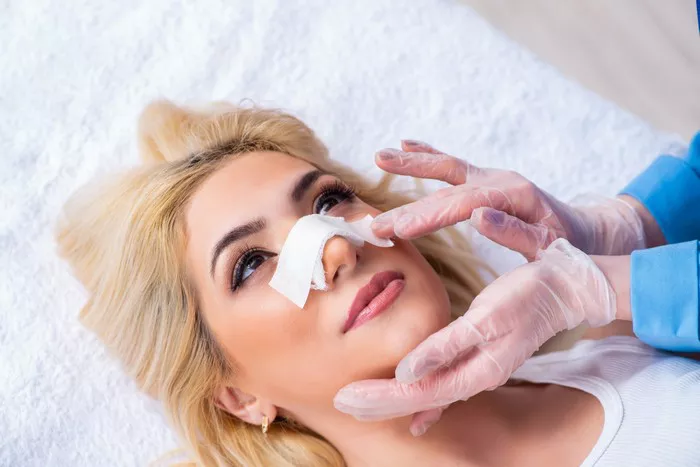Advancements in the field of cosmetic procedures have given rise to innovative techniques that offer transformative results without the need for surgery. Liquid rhinoplasty, also known as non-surgical rhinoplasty or nose filler treatment, is one such technique that has gained popularity in recent years. This procedure involves the strategic use of dermal fillers to enhance the appearance of the nose, correcting imperfections and achieving a more balanced facial profile. In this article, we will delve into the intricacies of how liquid rhinoplasty works, the types of fillers used, the procedure itself, and what individuals can expect during and after the treatment.
Understanding Liquid Rhinoplasty
Liquid rhinoplasty is a minimally invasive procedure designed to reshape and enhance the nose using injectable dermal fillers. Unlike traditional surgical rhinoplasty, which involves incisions and reshaping of the underlying bone and cartilage, liquid rhinoplasty focuses on augmenting specific areas of the nose to achieve the desired aesthetic outcome. This procedure is particularly beneficial for individuals seeking subtle refinements, temporary changes, or those who want to avoid the downtime and potential risks associated with surgery.
Types of Dermal Fillers Used
The primary component of dermal fillers used in liquid rhinoplasty is hyaluronic acid. Hyaluronic acid is a naturally occurring substance found in the body that contributes to skin hydration and volume. It has a remarkable ability to bind with water molecules, providing immediate volume and lift to the treated area. Some commonly used hyaluronic acid fillers for liquid rhinoplasty include Restylane, Juvéderm, and Belotero. These fillers come in various formulations with different consistencies, allowing medical professionals to tailor the treatment to each individual’s unique needs.
How Liquid Rhinoplasty Works
The procedure involves several key steps:
Consultation and Assessment: Before undergoing liquid rhinoplasty, an individual consults with a qualified medical professional. During this consultation, the practitioner evaluates the patient’s concerns, discusses their desired outcomes, and assesses the nose’s current structure and proportions.
Treatment Plan: Based on the assessment, the medical professional creates a personalized treatment plan. This plan outlines the areas that will be targeted with the dermal filler injections to achieve the desired enhancements.
Numbing Cream or Anesthetic: To minimize discomfort, a topical numbing cream or local anesthetic is applied to the treatment area. This ensures that the patient experiences minimal pain during the injection process.
Precise Injections: Using fine needles, the medical professional strategically injects small amounts of the chosen dermal filler into specific areas of the nose. These areas may include the bridge, tip, and sides of the nose, depending on the patient’s goals.
Sculpting and Molding: As the filler is injected, the medical professional sculpts and molds the nose to achieve the desired shape and symmetry. The goal is to enhance the nose’s appearance while maintaining a natural look that complements the patient’s overall facial features.
Immediate Results: The results of liquid rhinoplasty are often visible immediately after the procedure. Patients can witness the improvements in the nose’s shape, contour, and overall appearance.
Recovery and Aftercare: Following the procedure, patients may experience mild swelling, redness, or bruising at the injection sites. These effects typically subside within a few days. Patients are advised to avoid touching or massaging the treated area to ensure optimal results.
Duration of Results and Maintenance
The longevity of liquid rhinoplasty results varies from person to person and is influenced by factors such as the type of filler used, the injected area, and the individual’s metabolism. On average, results can last anywhere from 6 months to 2 years. Thicker fillers tend to offer longer-lasting results compared to thinner fillers. To maintain the desired outcome, patients may require periodic touch-up sessions as the effects of the filler gradually diminish over time.
Conclusion
Liquid rhinoplasty has revolutionized the field of aesthetic procedures by offering a non-surgical solution for enhancing the appearance of the nose. By strategically injecting hyaluronic acid fillers, medical professionals can achieve subtle yet impactful refinements to the nose’s shape and contour. This procedure provides immediate results, minimal downtime, and the flexibility to tailor treatments to individual needs. Whether it’s correcting minor imperfections or achieving better facial harmony, liquid rhinoplasty is a versatile option that allows individuals to enhance their features while avoiding the risks associated with surgical intervention. As with any cosmetic procedure, it’s essential to consult with a qualified and experienced medical professional to ensure safe and satisfying results.


